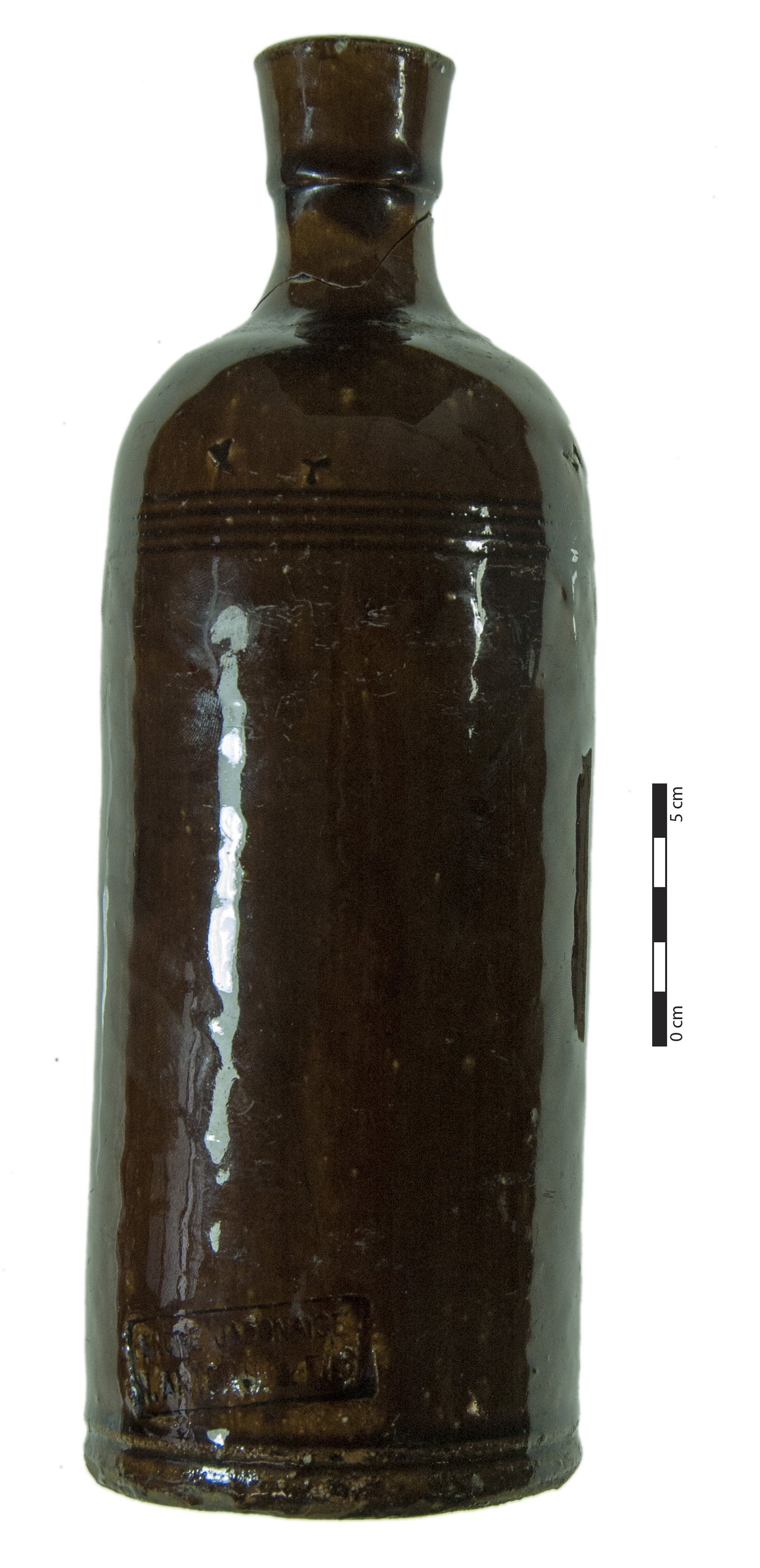This past week (let’s be honest, this year) has been a bit chaotic, work-wise, so it’s another blog post of artefact photos from me. Hopefully, in the next post I write, I’ll be able to give a bit more of an update on the database project and what we’re up to, but that day is not today. This week, because I’ve been doing a lot of writing and scribbling with pens and pencils, I’ve decided to showcase writing implements, particularly ink bottles. Most of us don’t use ink for writing as much as we used to and, thanks to the ballpoint pen, we certainly don’t require ink in the same format as our ancestors did. The ink bottles used by people in the nineteenth and early twentieth century came in a range of forms and sizes, but can be separated broadly into inkwells - that is, small bottles into which the pen-nib was dipped directly - and larger, ‘bulk’ ink bottles, used to refill these smaller bottles and inkwells. As an artefact of daily life, they are an indication of literacy, although not the only one. From the marks and names on the bottles, we can see the trade relationships to Britain and Europe and learn something about developments in ink manufacturing; from the shapes, we can learn about changes and innovations in glass-making during the nineteenth century.
A small circular inkwell with black residue still visible inside the bottle. This was found on the site of the old Occidental Hotel and could have been used by a hotel staff or a guest staying there. Image: Maria Lillo Bernabeu.
Penny ink bottles! So called because of their price, these are a very common find on nineteenth century archaeological sites in Christchurch (and New Zealand). Image: Jessie Garland.
P. and J. Arnold were British based manufacturers and exporters of ink during the nineteenth century. Their company had its beginnings in the early eighteenth century under another name and, by the nineteenth century, they were producing up to 30 different kinds of ink that were sent around the world. Image: Jessie Garland.
These delightful little bottles are known as ‘boat inks’ by collectors, although you might have to squint to see the resemblance to a boat. They’re notable for the grooves along the shoulder of the bottle, which allowed the user to rest their pen on the bottle without it rolling off. Image: Jessie Garland.
A cone ink (otherwise known as a “ring cone” or “cone carmine”). The inspiration for the name is a little more obvious here, given the distinctive shape, while ‘ring’ refers to the ring of glass on the shoulder of the bottle. This was found in association with an 1890s-early 1900s burn layer on a site on the west of the city. Image: Chelsea Dickson.
A beautiful wee octagonal ink bottle. This has the crude “burst-off” finish characteristic of these bottles, which were cheap and easily made. This one is from a c. 1880s context in the central city. Image: Jessie Garland.
A tiny square ink well with a slightly uneven base (this would not have stood flat on a desk!). I love that you can see the uneven cavity of the inside of the bottle through the side - how the glass pools in one corner but thins in the other. Image: Jessie Garland.
Another very predictable name - this is what’s known as a “bell ink”, although the bell shape is not so distinctive in this example as it might be in some others. This was found in a c. 1860s-1870s collection of rubbish deposited into a central city gully channel. Image: Jessie Garland.
An ink bottle shaped like a shoe! Why not. Image: Jessie Garland.
I love this bottle. This is what’s known as a churchwarden ink bottle, most commonly associated with red ink and identifiable from the distinctive square finish (or top). This was found on a site in Lyttelton, although we can’t associate it with any one business or household. It was made by Doulton and Co., Lambeth, potters well-known for their stoneware bottles and jars. The registration mark on the side dates its production to some time after 1876. Image: Jessie Garland.
French ink! It wasn’t just English inks and ink bottles exported to colonies like New Zealand. Several of these bottles, which bear the mark of Antoine et Fils (Antoine and Son) ‘L’Encre Japonaise’ (Japanese Inks), have been found throughout the city in deposits dating to the 1870s and 1880s. Antoine et Fils were Parisian based ink manufacturers operating from at least the 1870s, although we don’t know much about their business. Image: Jessie Garland.
And last, but by no means least, an ink bottle with a truly literary link (beyond the obvious). This ink bottle is stamped with the mark of Smith, Elder and Co., a London based publishing company who famously published Charlotte Bronte’s Jane Eyre in 1847. The company began as a bookseller and stationer, but became well-known as a publisher after the success of Jane Eyre. This bottle was found on a site associated with a local bookseller and stationer on Colombo Street in the 1860s. Image: Jessie Garland.













